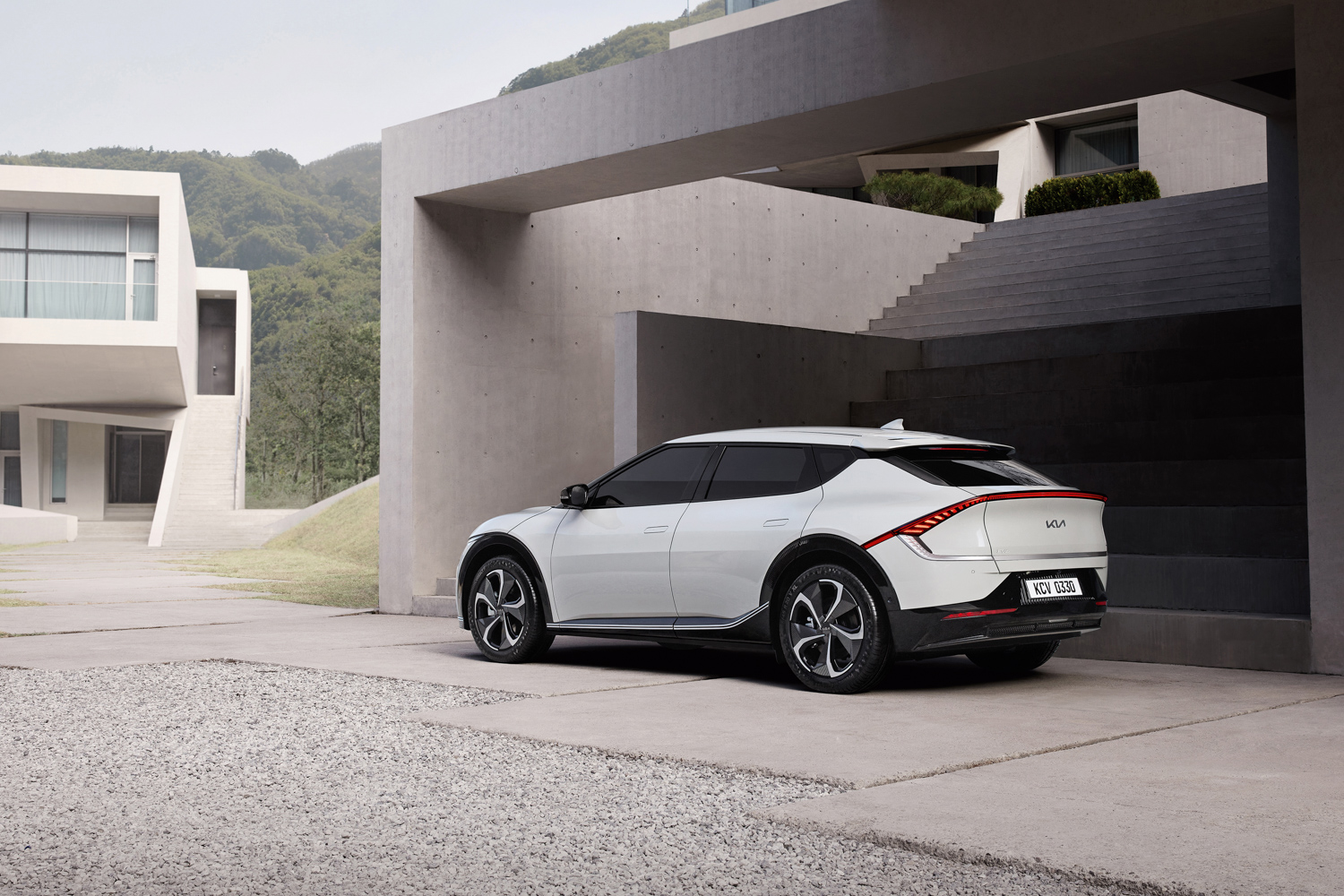Hot on the heels of sister company Hyundai's new Ioniq 5 all-electric hatch (or possibly crossover, or possibly SUV - it's bigger than it looks in the photos) comes this, the Kia EV6. As with his Hyundai close relative, the new Kia electric car will be the first in a family of EV-badged electric models, and it uses the same Electric-Global Modular Platform (E-GMP) chassis.
Maserati styling influence
Unlike the Hyundai, with its self-consciously retro styling, the Kia looks much more contemporary, and nothing like the Ioniq 5. Indeed, there are touches of the current Kia styling language for the EV6, especially around the lights and 'grille' although the shapes and details are a step forward from what you get on a Ceed or Sportage at the moment.
Much more avant garde is the rear end, which features a chopped-off Kamm-style tail, with a dramatic (and rather Maserati-eqsue) wrap-over rear light arrangement.
"EV6, as the first dedicated Kia EV, is a showcase of human-centred, progressive design and electrified power. We strongly believe EV6 is a compelling and relevant model for the new EV market," said Karim Habib, Senior Vice President and Head of Global Design Center. "With EV6 we aimed to create a distinctive, impactful design by using a combination of sophisticated, high-tech features on pure and rich volumes, while providing a unique space as a futuristic EV."
'Opposites United'
Kia reckons that the EV6, and its styling, embody the principle of 'opposites united.' What does that mean? Well, according to Kia's design gurus, it means mixing and matching different ideas and concepts, such as 'Bold for Nature' in which the styling is meant to mix both nautural and technical elements. Or what about 'Joy for Reason' which tries to find delight in things that are actually rather rational. Then there's 'Power to Progress' which is something about using continuous evolution so that Kia can make its electric cars better all the time. Or there's 'Technology for Life' which wants to create a better and easier linkage between you and I and the technology in the car (we think that means a simpler touchscreen design). Or, there's our favourite - 'Tension for Serenity' which apparently "delivers striking design concepts that use sharp, highly technical details to create surface tension - and realise a harmonised, future-oriented design vision." OK...
"We want our products to deliver an instinctive and natural experience that improves the daily lives of our customers. Our aim is to design the physical experience of our brand and to create original, inventive, and exciting electric vehicles. The ideas of our designers and the purpose of the brand are becoming more connected than ever, with our customers at the centre of what we do and influencing every decision that we make," added Karim Habib.
480km range
Inside, the EV6 looks surprisingly conventional - it even has wood trim! - with the now-expected massive conjoined screen for both instrumentation and infotainment, with a separate 'haptic control' panel underneath for heating and air conditioning, and some short-cut buttons for the screen.
As with the Hyundai, much of the interior is made from recycled materials, trying to shove the EV6's construction into more of a circular economy thing.
Kia hasn't revealed any technical details yet, and won't do so until the EV6 gets a bigger, grander unveiling later this month, but as it's based on the same E-GMP platform as the Hyundai, we can infer that it will come with a choice of 58kWh or 72.6kWh batteries, single-motor rear-wheel drive, or two-motor four-wheel drive, and a one-charge range of up to 480km. Power outputs should range from 169hp for a single-motor version to 305hp for the two-motor version, with 0-100km/h acceleration in around 5.5 seconds.







